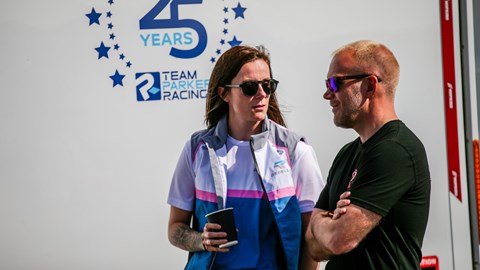Let there be no doubt that top-flight racing drivers are athletes of the highest order. They have to be. Racing puts an unbelievable physical and mental strain on them.
Take a Formula 1 race. What the drivers have to endure is tantamount to running a marathon in 40-degree heat, with 20-kilo weights attached to each limb and their head, while doing an A-level maths exam, while Anthony Joshua gives them everything he’s got. For two hours. And at the end of all that, rather than collapse in a sweaty, exhausted heap, they have to do six hours of media interviews, sponsor events and team debriefs. And they have to weigh as little as possible into the bargain.
But it’s not just high-downforce single-seaters that demand a high level of fitness, in professional and amateur drivers alike. Every driver on the grid at Le Mans spends several hours in the gym every day, even if they run a billion-dollar business. So do the best touring car drivers.
Put simply, the fitter you are, the better able you are to deal with the physical assault of racing while maintaining the mental acuity to drive as fast as possible. Even if you’re racing a car that puts precisely zero physical strain on you, the concentration required for only a 20-minute race can be absolutely exhausting. A quadruple stint at Le Mans lasts four hours. Being fit helps stave off the exhaustion, as well.
Fitness is a real concern for me as I prepare to get a racing license. Working at a computer and having a heavy-ish sugar addiction means I’m not in particularly good shape. I’m not disastrously unfit, but certainly nowhere near fit enough to perform in a race at the level I would want to. Some drivers actually do pretty well despite not being especially fit, or even outright unfit, but they usually have Herculean stamina to compensate. I doubt I do.
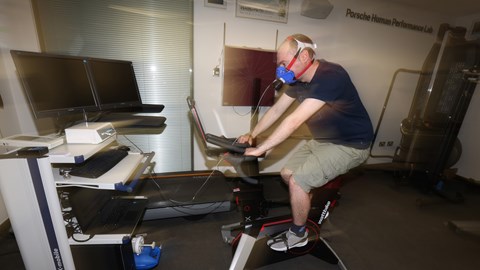
I started my racing journey by visiting Porsche’s Human Performance Centre at Silverstone for a fitness assessment to find out exactly how bad the situation is. I’ve since been doing cardio at the gym several times a week, and a home-based regime of stretches and weights. But, without getting in a racing car, it’s difficult to know what level of fitness I’m aiming for.
“There’s a base level of fitness that you need for racing, which I don’t think is as high as you would think.” So says Josh Stanton, an up-and-coming driver who spent 2024 racing in Porsche Carrera Cup GB (PCCGB), his words offering some hope that getting fit might not be that hard. “However, there are specific things in racing that you need to be very fit for.”
Ah. Such as?
“With the ABS, especially, you need a lot of leg strength to hit the brakes really, really hard,” Josh says. “You need a good level of core strength no matter what car you’re driving,” says Abbie Eaton, another driver who raced PCCGB in 2024. “And lower body strength for a GT car – you’re hitting the brake pedal at 150 bar,” she adds.
150 bar is well over 100kg of force that has to be stamped down on the pedal. Yikes. But that’s just one aspect of the whole package. I spoke to Abbie and Josh at the Croft circuit in Yorkshire, where the PCCGB took its regular slot supporting the British Touring Car Championship – you can read more of my conversations with them in the second article of this series. That Saturday in late July was the hottest day of the season to that point. The temperature outside was well into the high-20s Celsius; inside the Porsche 911 GT3 Cup cars, the needle was nudging 50.
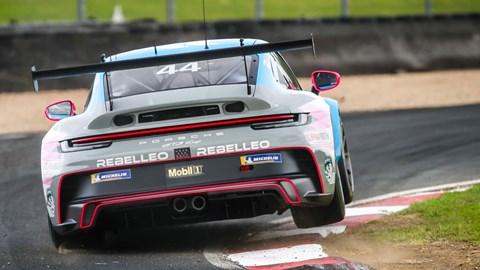
“I spend time in a sauna to acclimatise to the heat,” Josh tells me. Abbie adds: “You need really, really good cardio, a lot of time keeping your heart rate in that zone two section, trying to build your endurance there.”
Cardiovascular fitness is crucial to most forms of sport, indeed being healthy generally. The fitter your heart is the faster it can pump blood around the body, creating a high-speed flow of oxygen to the muscles that need it and carrying away harmful waste products such as carbon dioxide and lactic acid – and heat. Overheated muscles don’t work as well, causing you to lose strength and motor control. Abbie showed me her heart rate monitor from the morning’s qualifying session. She averaged around 160 beats per minute and peaked at well over 180. I rarely see more than 150 on the exercise bike, though that is zone four for 40-year-old men like me.
Modern racing drivers – particularly at F1 level – and their team of trainers take a highly scientific approach to fitness. Michael Schumacher arguably originated that approach, forcing the rest of the grid to do likewise to give themselves a fighting chance against him. A decade earlier, Ayrton Senna had been arguably the first driver to take fitness in general really seriously, again forcing the rest of the grid to do likewise.
In earlier eras, many drivers might have done a bit of running and/or cycling to stay in shape, but the prevailing theory was that you got fit enough to race a particular car by racing that car. Stirling Moss was the probably fittest driver of his era yet, by his own admission, he never set foot in a gym. His lean, muscular physique seen in period photos was the product of many, many hours racing hot cars with heavy steering.
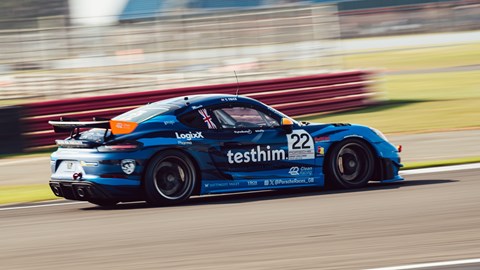
“There’s definitely something called ‘car fit’, and that’s very different to being generally fit,” says Toby Trice, who races in Porsche Sprint Challenge GB. “You use such a unique set of muscle groups in a car that’s actually quite hard to train for. Shoulders, forearms, the finer motors in your hands. The more time you spend in the car, you’ll naturally get stronger in areas that are required when driving. The best way to train for your sport is to do your sport.”
Toby adds: “I don’t ever do heavy lifting, I just use resistance bands on muscle groups that I use in the car. Then I run two or three times a week doing no more than 5k. I don’t do anything crazy, just something I can easily maintain.”
Working full-time as a train driver, Toby is more limited in the time he can devote to fitness. He started at a slight disadvantage, as well, not taking to racing until he was 27 – Abbie and Josh started when they were kids.
All three drivers are at different stages of their career, and that informs the level of fitness they need and/or can attain. Toby would love to be able to turn professional but doesn’t necessarily expect to. He needs to be fit enough for the car he’s currently racing; if he can move up the ladder, he’ll put the work in to get fit enough to drive that car.
Josh, who works as an engineering consultant alongside his racing, is working towards turning professional. He targets his fitness so that he’s already ready for the next car when he gets the opportunity to move up.
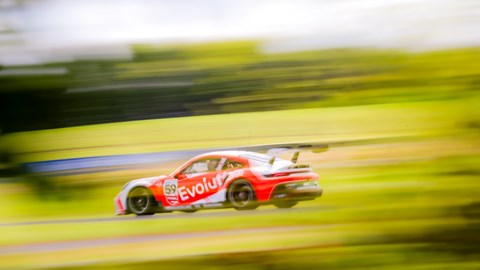
Abbie is an established professional and it’s part of the business model to be fit enough to jump into pretty much anything and perform straight away. But even she faced challenges joining Porsche Carrera Cup GB.
“I really upped my cardio and it’s made a massive difference to how quick I recover,” she says. “We’ve got two races that are sometimes only two or three hours apart and you’ve got to go in and perform again.”
I’d like to be at Abbie’s fitness level, but I’d need to quit the day job and spend an awful lot of time – and money – in the gym with specialist motorsport trainers. More realistically, I need to aim for Toby’s level first, then maybe push onto Josh’s level. But even that may take more time and effort than I can expend.
Ultimately, whatever physical demands the car places on you, you’ve got to find a way of achieving the required level of fitness that works for you, that helps you to extract the maximum from that car, lap after lap. “Mobility exercises are so important,” Abbie says. “Those little muscles are so important because they support all the big muscle groups.”
“I focus more attention on areas that are weaker,” Toby says. “So if, after a race weekend, I feel that my legs were a bit light on the brakes, I work more in that area for the next weekend.”
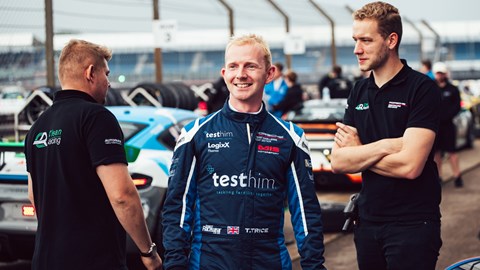
“To really extract the peak of performance, I think that’s where you need your mental fitness,” Josh says. “I go for a run then do some mental exercises, or jump on the sim to do 10 laps within two tenths.”
Speaking with Abbie, Josh and Toby has given me a lot to think about. Come the start of 2025, I need to knuckle down and level up my fitness regime a few notches, applying the tips and pointers they gave. But there’s one crucial element that I really struggle with: motivation.
Getting fit is as much a mental battle as a physical battle. Without the adrenalin of a race pumping, my brain is frequently less willing than my body and wants to give up on a workout before it’s finished. Because there’s no solid goal, no prize to aim for. How do racers find the motivation to keep going in the gym?
Abbie puts it simply: “Do you want to be fast? That’s all the motivation you need, simple as that.”
I want to be fast.
